
A short history of timing - 40 years of the World Sailing Speed Record Council
by WSSRC 23 Dec 2012 09:29 GMT
23 December 2012
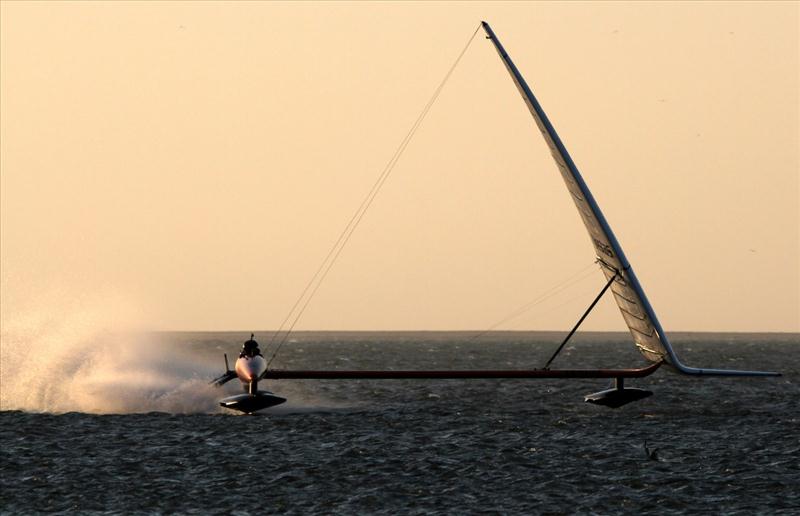
Outright World Speed Sailing Record holder, VESTAS Sailrocket 2 © Helena Darvelid / VESTAS Sailrocket 2
Introduction
The integrity of WSSRC has always depended on the skill and hard work of its Commissioners – men and women who seem to spend an inordinate amount of time standing on windswept shores or in icy water while strange sailing craft flash pass. One who has been involved since the very beginning is Michael Ellison who has quite literally spent years of his life ensuring that the right competitor
gets the right time and that it is an accurate one. Here's how he recalls it:
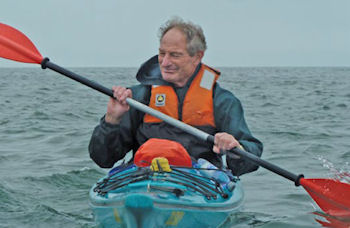
Michael enjoying a little gentle kayaking near St Kilda
I hope that we can get across that WSSRC needs new records and our aim is to help improve speeds - but at the same time we owe a duty to existing record holders to see that their speed is fairly exceeded. I like to point out that every competitor's best speed is their personal record and therefore every attempt has to be measured with similar care.
A Word from The President
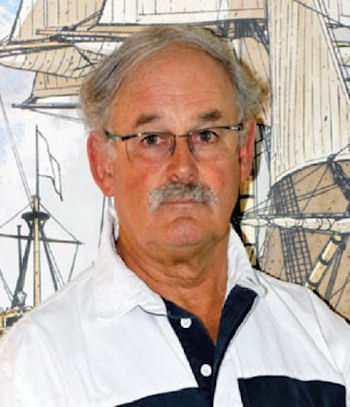
Claude Breton
1972 – 2012.... 40 years. Just like a Ruby Wedding! Well, perhaps not exactly like a marriage, but it has been a long, intensive and close collaboration of the many players – both on and off the water – who have been involved in sailing speed records over the last 40 years. It is certainly a cause for celebration that we are still going from strength to strength after all this time.
I once saw a headline in a yachting journal which read: "WSSRC – the Masters of Time". This may have sounded a bit pretentious, but the writer meant that we are responsible for time-keeping. It is our duty to approve and ratify, maintain and publish exact and accurate data. In our quest for rigorous and strict accuracy we have always remained at the forefront of technological developments. And all of our Council members are expert in the required fields of observing and ratifying records. I am very proud to be Chairman of this prestigious organisation and it is a
particular honour to follow in the footsteps of one of my illustrious predecessors, Sir Reginald Bennett, who did so much to gain international recognition for the WSSR Council, and to whom I owe so much.
And we must not forget John Reed, who has been managing the Secretariat since the beginning. As one of the historic first members of the organisation he certainly is the keeper of the temple!
My best wishes for WSSRC and its next 40 years. I wish that it may continue to be as efficient as ever and likewise continue in its development of technical knowledge.
And may there be strong winds for all those attempting records...!
Claude Breton, August, 2012
The History
The year 2012 has been in many ways a momentous one for sailing. The Olympic regatta was contested at Portland, which was also the birth-place of speed sailing and of the WSSRC, which was set up to provide fair and accurate measurement of speeds achieved under sail. Shortly before the 2012 Olympics, our governing body ISAF announced that for the next Olympics in Rio kite-sailing would be
added to the list of events. May we modestly point out that it was in a WSSRC event at Portland that kite-sailing was first seen in competition, and, following the usual tantrums that accompany the creation of any new sport, was welcomed into the ISAF family. Today, the fastest speed kite-sailing is 55.65 knots, achieved by Rob Douglas of USA in a WSSRC supervised event at Luderitz, Namibia. And if anyone visiting the 2012 Olympic regatta needed to see what this fantastic new sport looks like, they only had to glance towards Chesil Beach where local enthusiasts could be observed zooming up and down the old 500m speed course, whenever the breeze was up.
It is somewhat ironic that the creation of the World Sailing Speed Record Council resulted from the boastful claim of a paint company. This outfit, which made a special soft graphite paint, announced that the C-Class catamaran Lady Helmsman, (which was indeed a very fast boat) had sailed at 30 knots. This so annoyed Bernard Hayman, editor of Yachting World that he demanded to know how this speed had been measured and was told that by sailing close to the promenade of Southend-on-Sea, the boat could be paced by a car.
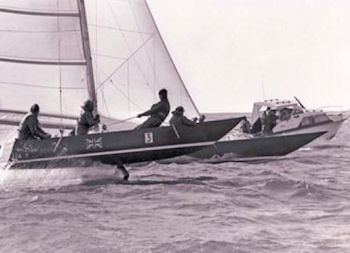
Crossbow, the first world record holder - photo © PPL Media
That was ridiculous, but inspired the magazine to propose a new event, devoted entirely to measured speed. The Royal Yachting Association agreed to organize it and after an extensive search Portland Harbour was selected as the best venue and, because of its geography, 500m was determined as the
distance to be sailed.
From the outset it was intended that the World Sailing Speed Record could be attempted anywhere in the world. The first event was held in 1972 and was won convincingly by the 60ft proa Crossbow, specially designed and built for the newspaper proprietor Timothy Colman, with a speed of 26.30 knots, measured by stopwatch on a course marked by a circle of buoys. So much for the painters
and their 30 knots!
Colman kept up his involvement for another six years and the second Crossbow eventually reached 36.00 knots while the nearest rival, the hydrofoiler Icarus, could only manage 28.15 knots. If the only possible record-breaker would have been a hugely-expensive multihull, then the enthusiasm could have died, but it was saved by two things: a strong interest in this new game from other countries, especially France and Holland, and the invention of the Windsurfer. This sailboard and thousands of imitators was cheap, potentially fast, and easy to carry on a car roof. In 1986 Pascal Maka of France blew the Crossbow era away with a speed of 38.86 knots, sailing not at Portland,
but at Sotavento in Spain.
The Portland course was converted from the circle to a straight line along the beach, but received a fatal setback when French enthusiasts saw the possibility of constructing a special course to take full advantage of the famous Mistral wind. The 'French Trench' at Stes Maries de la Mer enabled sailboards to increase their speeds dramatically to a fraction below 50 knots by 2008 before it, too, became a victim of exotic locations such as Luderitz in Namibia. In any case, the contribution of the organizers had long since changed from being an event manager to a global ratification authority, providing rules and supervision to every possible record under sail.
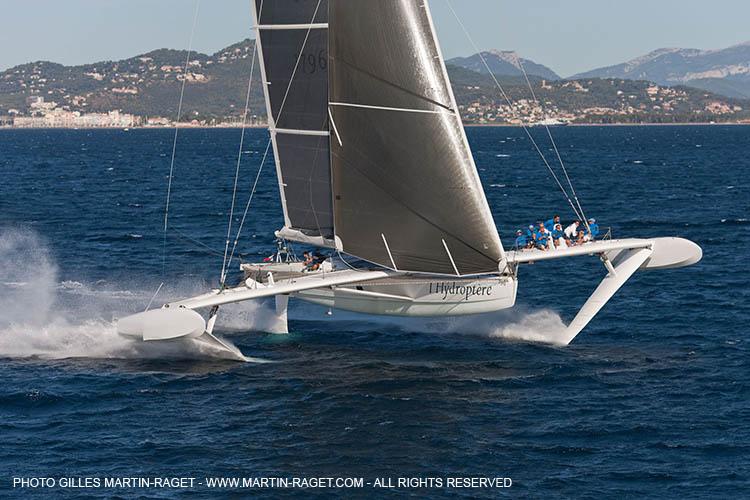
L'Hydroptere at speed - photo © Gilles Martin-Raget / L'Hydroptere
There followed a fascinating era in which the outright world record was forced slowly upwards by a non-stop battle between boards and boats – or rather engins as the French describe them. In Australia an unremitting effort by Lindsay Cunningham and his team was finally rewarded when Macquarie Innovation touched 50 knots in 2009. Meanwhile the British-built inclined rig machine Sail Rocket was transported to Namibia for a series of attempts. In France, the
long development of the big foiler l'Hydroptère was rewarded by a small step upwards to 50.17 knots, only to see it raised again the following year by the kite-boarder Rob Douglas who bettered 55 knots in Namibia.
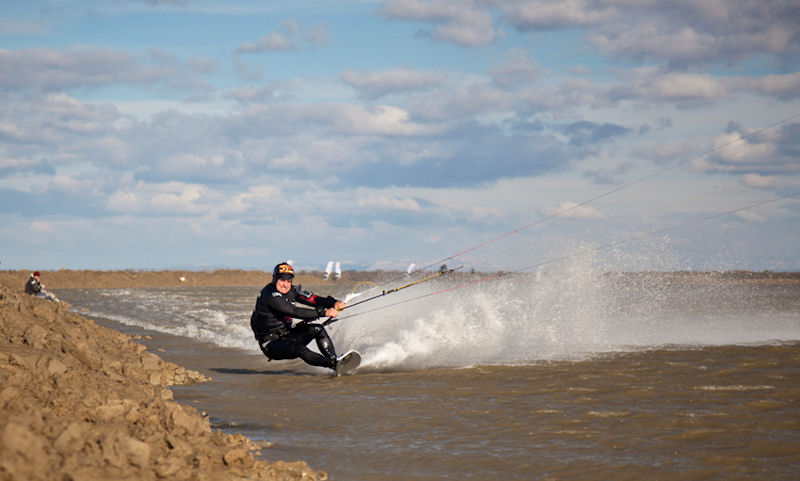
Rob Douglas at speed in Salin-de-Giraud, France - photo © Tanguy Blondel
Paul Larsen's VESTAS Sail Rocket 2 then took a gigantic leap forwards, pushing speed sailing into a whole new era with a 500 metre run averaging 65.45 knots and a nautical mile run at an average of 55.32 knots.
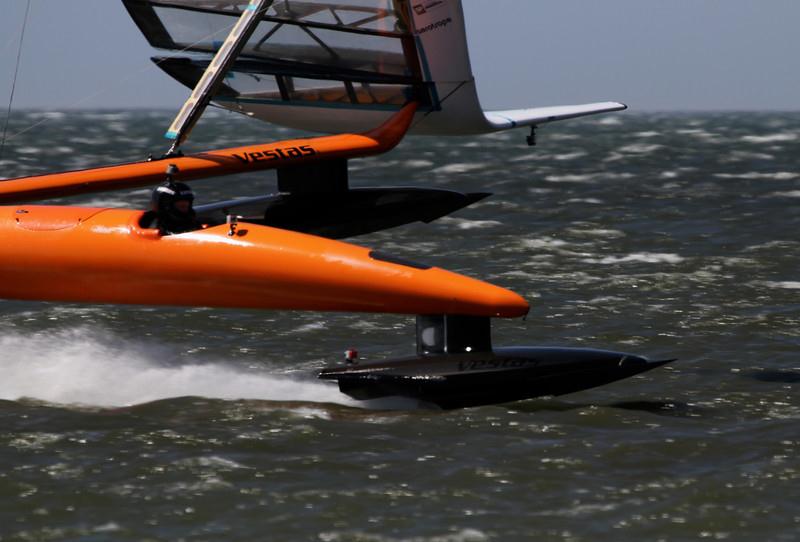
Simply sensational: 65.45 over 500 metres for VESTAS Sailrocket 2 - photo © Helena Darvelid / VESTAS Sailrocket 2
Going offshore
A huge increase in WSSRC's work came in 1988 when it took on responsibility for offshore and passage records. This happened during the chairmanship of Sir Peter Johnson who was an experienced Ocean Racing skipper himself. No-one could possibly have imagined the extraordinary number of distance records that now exist – think only of the transatlantic and round the world courses that are under almost constant attack by craft and crews of every kind.
There could be no more challenging course than around the world and its iconic status was given a powerful boost when a French group donated the Trophee Jules Verne for the first crew to do it in less that the magic figure of 80 days. This 'barrier' was surmounted by the legendary French sailor Bruno Peyron in just 79 days, 6 hours in 1993.
In the following year there was a highly dramatic contest between the catamaran Enza New Zealand and the trimaran Lyonaisse des Eaux, each of which knocked about 3 days off the record. But the really astonishing fact is the current record, set by Loick Peyron and crew in the trimaran Banque Populaire 5, in just 45 days, 13 hours.
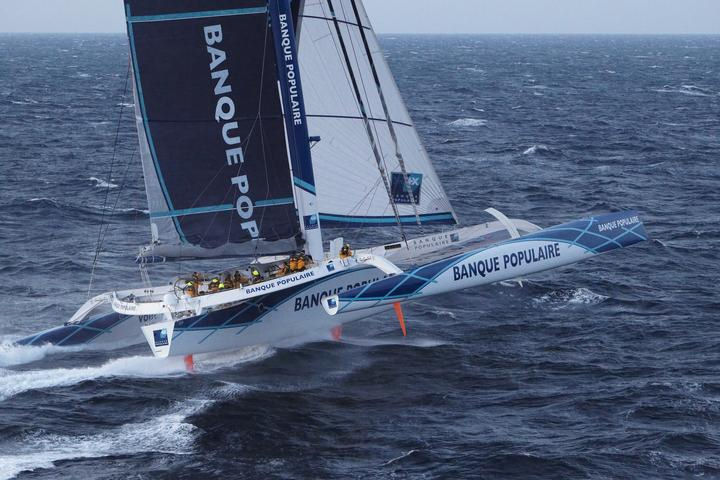
Maxi Banque Populaire V set a new Jules Verne Trophy record of 45 days 13 hours 42 minutes 53 seconds - photo © Benoit Stichelbaut / BPCE
Once a record is established there follows an effort to establish what might be called special
versions of it such as 'single-handed', 'by a woman' or by a limited type of yacht such as 'mono-hull', 'Up to 40ft in length'. Nowadays WSSRC has a full list of categories which can apply to any course. However, the Council does not recognize human condition records such as "youngest" or "oldest".
A popular new category, on the other hand, is for yachts with 'powered sailing systems'. This is because there is a new breed of big and fast cruiser-racer sailing yacht that cannot be handled safely or effectively without powered winches. Major races such as the Volvo Ocean Race permit moveable keels and ballast, and so it makes sense for WSSRC to recognize their best times.
Increasingly offshore records depend on satellite navigation systems such as GPS to verify them, and there was a huge step forward in the ratification procedure when Stan Honey, the well-known offshore navigator and electronics wizard, developed a small, portable GPS logger which can be placed aboard any yacht wishing to attempt an offshore record. This is known as the WSSRC 'Black Box' and is crucial in proving exactly where a yacht has been during a lengthy passage. In spite
of this, there is still a requirement for starts and finishes to be witnessed by human eyes, which are looking keenly for any deviation from the rules, such as the number of people on board.
The full list of records over 500m plus all the passage records in all categories can
be found at www.sailspeedrecords.com